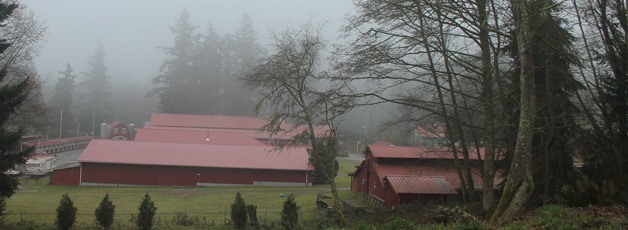A proposal to make the Island County Fairgrounds more viable calls for the demolition of more than half of the facility’s 27 buildings.
The swine/cat barn, dog kennels and many more would all be torn down to make way for newer, more efficient structures, according to a plan developed by fair officials, local government representatives and a consultant.
The best known and historically significant buildings, such as the Pole Building would remain, as would the Fiddle Faddle Barn, though it’s slated for relocation to the east side of the grounds.
Maintaining the 27 facilities at the Island County Fairgrounds has become too costly, and a major overhaul of the space may yield better returns, a steering committee of fair and community leaders have concluded. The hope is that by renovating the buildings and reducing some facilities, the space will be better utilized and can be used year-round.
For the past several months, Whidbey Island Area Fair officials have looked at changing their role with the county-owned fairgrounds and some of the decades-old structures. The solution was presented to the Langley City Council last week as a precursor to open houses on the proposed changes planned in February and March. 
Overhauling the fair, including changing the property’s name to the Island Event Center, came with an estimated $10.12 million price tag and a plan to spread the cost over four phases and 10 years.
“Expecting a four-day event to take care of the other 361 days creates an imbalance,” said Norm Landerman-Moore, of Anacortes-based Landerman-Moore Associates. A paid consultant, he was hired last year to evaluate the fair and create a strategic plan.
Tantamount to the overhaul is reducing the 12.8-acre grounds’ 27 facilities to 12, cutting by more than half the amount of heating and other overhead costs. One reason for demolishing 15 structures at the fairgrounds, said Landerman-Moore, was their “state of disrepair.”
“We needed to undertake an effort to improve the production of the fair,” he said.
Before moving forward, a steering committee that included fair association Director Dan Ollis, Langley Mayor Fred McCarthy, South Whidbey School Board Director Damian Greene, among several others, would seek approval from the Island County Commissioners, who would have to create a public development authority, in March.
Under their plan, the Island County Commissioners would create a public development authority, or PDA. State law allows public corporations or public development authorities to be created to “improve the administration of authorized federal grants or programs, to improve governmental efficiency and services, or to improve the general living conditions in the urban areas of the state.” As the fair’s overseeing agency, it would serve as the overseer and guiding force of the fairgrounds, identifying ways to finance the project. Ollis said the PDA would likely have an executive director and a board of directors.
One way Landerman-Moore proposed paying for the changes was with a bond, though not one approved by Island County residents on a ballot. Instead, it would be a revenue-based bond that the PDA would approve and hold against the fairgrounds’ revenue.
“It’s based on revenues,” Landerman-Moore said. “It has to pass all of the same tests that a commercial loan has to pass.”
The initial plan also proposes other funding sources, such as federal grants through the U.S. Department of Agriculture, U.S. Economic Development Administration, fundraising through donor-based membership and income from renting facilities. Phasing the project into four parts, the three presenters said, will hopefully make it easier for Island County residents to support the plan.
“We understand that in our community, we don’t have unlimited resources,” said Ron Nelson, executive director of the Island County Economic Development Council. “By spreading it over time, it makes it a lot easier to reach reasonable objectives.” 
The re-imagined fairgrounds would have better defined and encompassed areas the consultant and fair directors dubbed “neighborhoods.”
Many of the barns for fowl, pigs, dogs and cats that currently exist would be replaced with a single covered facility with moveable pens to accommodate the different show animals. Called the Market Place, it was described as the fair’s top priority and the primary mechanism for getting back to the event’s roots as a place for small-farm agriculture and industry to show wares and produce.
For fans of the annual log-rolling and pole climbing demonstrations, that space is proposed to remain untouched.
The main entrance would be moved west along Dalton Lane, the unpaved stretch of road between the fairgrounds and the Langley Middle School ballfields. In its place and along the border with Camano Avenue, an interpretive trail called Heritage Park would be created. The food area would remain in its current location, and the stage would be put in the northwest corner as part of the so-called entertainment neighborhood.
The center of the grounds, a grassy area used for rides and attractions during the annual fair, would be converted into the exposition neighborhood. It would retain its open, festival, park-like setting.
An area for equestrian events would remain, though with a redone, covered area for year-round events.
At the upcoming public presentation on Feb. 18, Ollis said he hoped to gauge public support for the changes. Having served as a fair director for several years, however, Ollis said the grounds and, as a result, the fair are in dire straits, noting a reduced expense for entertainment to save costs in favor of maintenance.
“There’s definitely a need that something has to happen on this property,” Ollis said.


